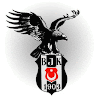In 2006, the Best Western International Hotel Chain will celebrate its 60th anniversary, providing quality service and hotel accommodations to leisure and corporate travelers alike. Below are some highlights from the long history of one of the world’s best-known brand names.

1946 Best Western Motels was founded by M. K. Guertin, a hotelier with 23 years of experience in the business. The hotel chain began as an informal link between properties with each hotel recommending other hotel lodging establishments to travelers. The "referral system" consisted of phone calls from one front desk operator to another.
1951 In a guest editorial published in American Motel Magazine, Guertin spoke of the importance of advertising properties to the general traveling public. This was considered a very revolutionary approach in the industry.
1962 The Best Western Hotel Chain had the only hospitality reservations service covering the entire United States and Canada.
1962 Best Western began using the crown logo with a rope border to identify member properties.
1963 Best Western was the largest hotel motel chain in the industry with 699 member properties and 35,201 motel rooms.
1964 The group of motels east of the Mississippi River was incorporated as Best Eastern, Inc.
1966 The entire membership, Best Western and Best Eastern, joined under the Best Western name. A seven-person Board of Directors was elected by regional members to provide leadership and make policy decisions. Guertin retired.
1966 The organization moved its headquarters from Long Beach, California, to Phoenix, Arizona. The Board decided to relocate because of the savings involved in centralizing operations and the potential for further expanding membership services.
1966 A major expansion of Best Western services was announced. Changes included: Establishing a new hotel reservation center offering toll-free service for business commuters, travel agents and vacationers through arrangements with American Express; expanding into Europe, the Caribbean and the Pacific; increasing membership standards; opening sales offices in Washington, D.C., Montreal, Phoenix and Seattle; establishing tie-ins with airlines and representatives from other transportation industry members and investigating stronger infiltration of tour and business meeting markets.
1972 Properties were required to accept six major credit cards. Hotel reservations that were charged were considered "guaranteed" and a hotel room had to be held for the entire night. Properties had the right to bill for "no show" clients.
1974 Best Western Hotels decided to drop its referral organization image, eliminated the word "motel" from its name and began competing directly with other full-service hotel lodging chains.
1976 Best Western began its push for foreign expansion. Affiliation agreements were signed with 411 properties in Australia and New Zealand.
1977 To meet the demands of rapid growth, a multi-million dollar Best Western International Headquarters complex was designed and built in northeast Phoenix.
1977 The phrase, "world's largest lodging chain" became a part of Best Western's corporate identification and advertising theme.
1979 Best Western was accommodating 15 million guests and generating $1 billion in hotel room sales.
1980 Agreements were signed bringing 19 properties in Denmark, 120 properties in France, 19 properties in Finland, 23 properties in Spain, 19 properties in Sweden and 93 properties in Switzerland into the international hotel chain. By this time, Best Western's 903 international affiliates comprised 34 percent of the chain's total membership.
1980 Best Western membership rose to 2,654 hoteliers worldwide.
1981 In August, a satellite hotel reservations center was established inside the Arizona Center for Women (ACW), a minimum-security correctional facility in Phoenix. This innovative venture, employing inmates as reservations sales agents, answered the chain's business need for a flexible work force. The program brought numerous awards and worldwide attention to Best Western. The ACW satellite hotel reservations center closed in 1992.
1988 The Gold Crown Club® International Program for frequent travelers was launched in September. Within a year, it would report more than 200,000 members and sales of more than $40 million.
1993 The brand identity study, now complete, recommended the adoption of a new Best Western logo and identity. On Nov. 30, the members approved the adoption of a new logo and officially retired the Gold Crown logo.
1995 Best Western introduced its first hotel listings on the Internet at BestWestern.com. Full information on 150 member properties, including photographs, became instantly available via personal home computer.
2002 Best Western members implemented BestRequests®, a uniform worldwide package of amenities and services.
2004 Best Western launched the hotel industry’s largest High-Speed Internet Access (HSIA) initiative with the fastest implementation. In just eight months, the company established free wireless or hard-wired HSIA in some portion of the public areas, and at least 15 percent of hotel rooms, at all of its North American properties.
2004 Best Western became the first-ever Official Hotel of NASCAR®. The NASCAR® travel discount RaceFan®Rate was created.
2005 Best Western transitioned North American and international hotel reservations to a call center in Manila, Philippines.
2005 Best Western began averaging $1 million in online hotel reservations per day through www.bestwestern.com.
Reference:http://www.bestwestern.com/newsroom/history.asp













0 yorum:
Post a Comment